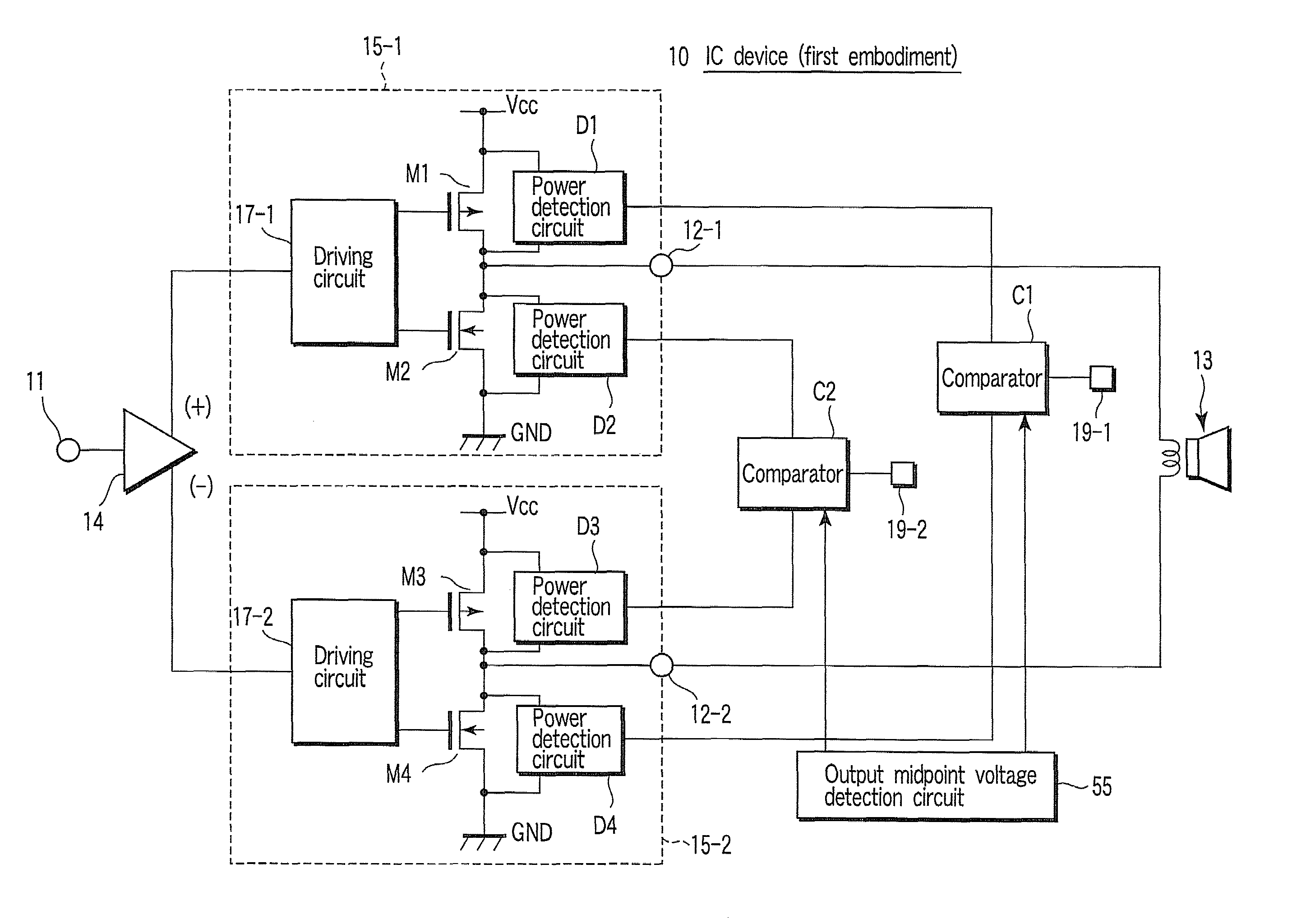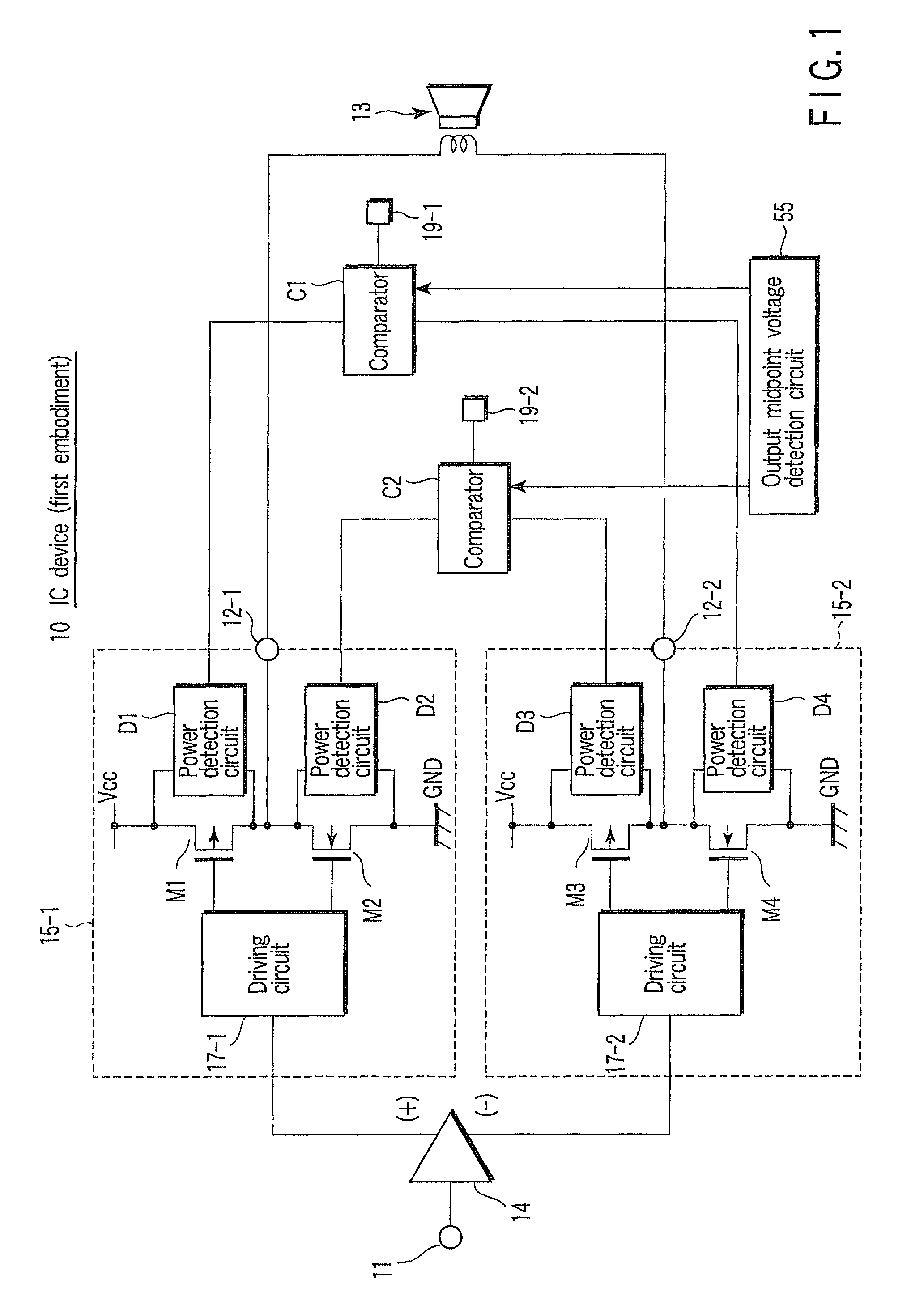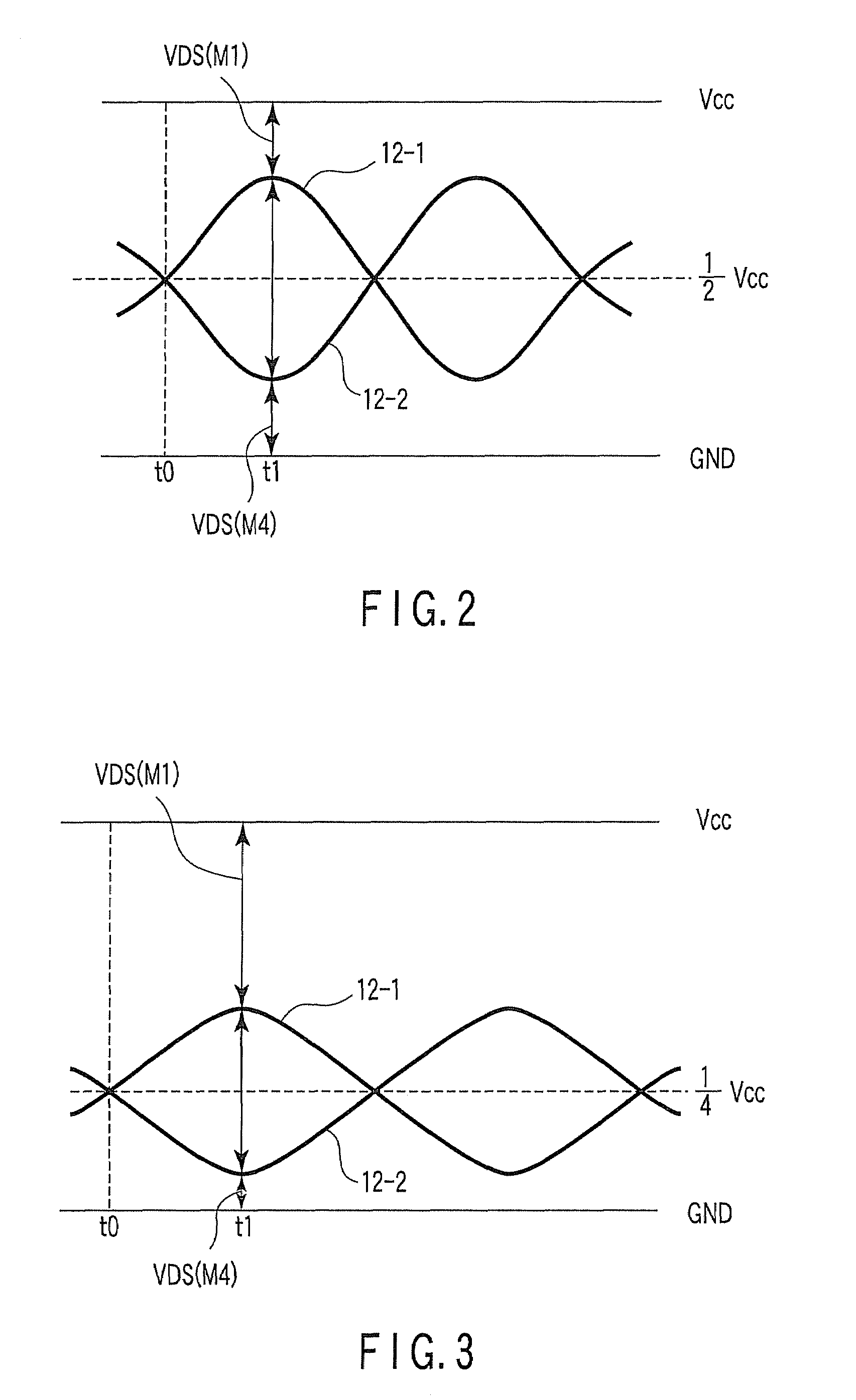Power amplification device
a power amplifier and amplifier technology, applied in the direction of amplifiers with semiconductor devices only, amplifiers with semiconductor devices, amplifiers, etc., can solve the problem of limiting the magnitude of the drivable load, the precision of the sensitivity setting of the protection circuit cannot be sufficiently enhanced by conventional devices, and the output transistor cannot be destroyed. ambiguous determination, the effect of maximizing the detection sensitivity and load driving performance at the time of erroneous connection
- Summary
- Abstract
- Description
- Claims
- Application Information
AI Technical Summary
Benefits of technology
Problems solved by technology
Method used
Image
Examples
first embodiment
[0027]To begin with, referring to FIG. 1, a power amplification device according to a first embodiment of the present invention is described. FIG. 1 is a block diagram showing the power amplification device according to the first embodiment. In this embodiment, an amplification circuit device using a BTL (Bridge Tied Load) system is described by way of example.
[0028]As shown in FIG. 1, the power amplification device 10 includes a speaker 13, an amplifier 14, amplification circuits 15-1 and 15-2, comparators C1 and C2, and an output midpoint voltage detection circuit 55. The power amplification device 10 is configured to detect an overload state occurring at a time of short-to-ground or short-to-supply due to erroneous connection of an output terminal 12-1 or 12-2, while driving the speaker 13 by means of the BTL-system amplification circuits 15-1 and 15-2.
[0029]The amplifier 14 is configured to amplify an input signal from an input terminal 11, and to output the amplified signal to ...
example 1
An Example of the Power Detection Circuit
[0106]Next, a power amplification device according to Example 1 is described with reference to FIG. 8. Example 1 relates to an example of the power detection circuit D1. A detailed description of the parts common to those in the first embodiment is omitted here.
[0107]As shown in FIG. 8, the power detection circuit D1 includes a current-mirror transistor M11, resistors R11 and R12, and bipolar transistors Q11 and Q12 that constitute a current-mirror circuit.
[0108]The current-mirror transistor M11 is configured to detect a current of the output transistor M1. The current-mirror transistor M11 is a PMOS transistor having a source connected to the internal power supply Vcc, a drain connected to an emitter of the bipolar transistor Q1, and a gate connected to the gate of the output transistor M1.
[0109]One end of the resistor R11 is connected to the emitter of the bipolar transistor Q11, and the other end thereof is connected to an emitter of the b...
example 2
An Example of the Power Detection Circuit
[0115]Next, a power amplification device according to Example 2 is described with reference to FIG. 9. Example 2 relates to an example of the power detection circuit D2. A detailed description of the parts common to those in the first embodiment is omitted here.
[0116]As shown in FIG. 9, the power detection circuit D2 includes a current-mirror transistor M22, resistors R21 and R22, and bipolar transistors Q21 and Q22 that constitute a current-mirror circuit.
[0117]The current-mirror transistor M22 is configured to detect a current of the output transistor M2. The current-mirror transistor M22 has a source connected to the ground power supply GND, a drain connected to an emitter of the bipolar transistor Q21, and a gate connected to the gate of the output transistor M2.
[0118]One end of the resistor R21 is connected to the emitter of the bipolar transistor Q21, and the other end thereof is connected to an emitter of the bipolar transistor Q22. On...
PUM
 Login to View More
Login to View More Abstract
Description
Claims
Application Information
 Login to View More
Login to View More - R&D
- Intellectual Property
- Life Sciences
- Materials
- Tech Scout
- Unparalleled Data Quality
- Higher Quality Content
- 60% Fewer Hallucinations
Browse by: Latest US Patents, China's latest patents, Technical Efficacy Thesaurus, Application Domain, Technology Topic, Popular Technical Reports.
© 2025 PatSnap. All rights reserved.Legal|Privacy policy|Modern Slavery Act Transparency Statement|Sitemap|About US| Contact US: help@patsnap.com



